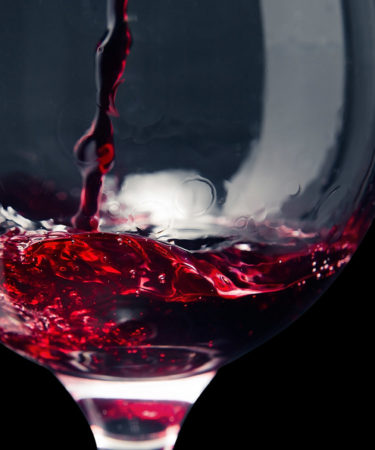The term “jammy” has become peak wine jargon. It’s used to describe all sorts of sweet and quaffable wines, including some of the most popular Zinfandels and red blends on the market.
These wines have been trending for several years, but their common use of such additives as sugar, water, and copious quantities of crystalline acid, is rarely discussed.
What technically makes wines jammy is ripe fruit. When grapes are left on the vines longer than normal (often longer than recommended), they develop an especially high level of sugars. The upside to this is that rasinating grapes contain those sweet, ripe fruit flavors that are so beloved in big reds. On the flip side, as sugar levels go up in grapes, acid levels go down.
Acidity can be overpowering, but it also provides balance and stability in wine. It serves as the backbone of the wine structurally, makes it more food-friendly, and adds a freshness that would be sorely missed. Without adequate acidity, a wine falls flat. Acidity pulls everything together. It’s the glue.
Winemakers measure sugar content in brix, a scientific term that means one gram of sucrose (sugar) for every 100 grams of liquid. A typical brix level in red grapes at harvest is around 25. Early pickers will target 23 to 24.5, and late pickers tend to twiddle their thumbs until grapes are between 26 and 30 brix. At that point those very ripe grapes are carrying concentrated fruit flavors, but potentially a lower level of acidity. When acidity is low, the juice’s pH is conversely high, and this presents dangerous winemaking conditions and a predisposition to spoilage.
This is where an additive called tartaric acid might come into play. Winemakers eager to reduce the pH can do so by adding this crystalline powder. While some tartaric acid does occur naturally in plants, it’s added here in bulk; often, pounds and pounds of tartaric acid crystals will be dissolved into water and then mixed into the wine.
There are two other common additives in jammy wines: water and sugar. As grapes hang on the vines and the brix creeps up, so does alcohol potential. California winemakers often add water to replenish dehydrated grapes, which decreases the alcohol content of the finished wine.
If fermentation stops before all the sugar has been converted to alcohol, residual sugar remains in the juice. If not, some winemakers will add grape juice concentrate to the finished wine to make it sweeter and more attractive to the American palate. Believe it or not, some of the most popular “big reds” in your local grocer, like Apothic Red and Ménage à Trois, have between 10 and 30 grams of residual sugar.
Abe Schoener, winemaker of Scholium Project, believes that it is indeed possible to make jammy wines without additives, but the vineyard site and growing conditions must be just right. This means well-drained soils and no irrigation.
“You can’t do it everywhere, especially with irrigation,” Schoener says. “If you use irrigation to drive up sugar potential, that simultaneously drops the acid in the grapes.”
As a small producer, Schoener has great control over the farming of his grapes and every lot gets his attention. For the right balance of sugar and acid in the grapes, Schoener says, it’s important to monitor closely before harvest.
“We’re watching the fruit ripen, and we want to catch it at that intersection of maximum fruit ripeness and acidity before the acidity begins to crash,” he says. “You can always taste the beginning of the pH shift; you want to try to get into the vineyard before that happens.”
Choosing when to harvest just might be the most pivotal winemaking decision in the whole process — it sets the tone for either minimal intervention, or incessant backpedaling to try to achieve balance.
